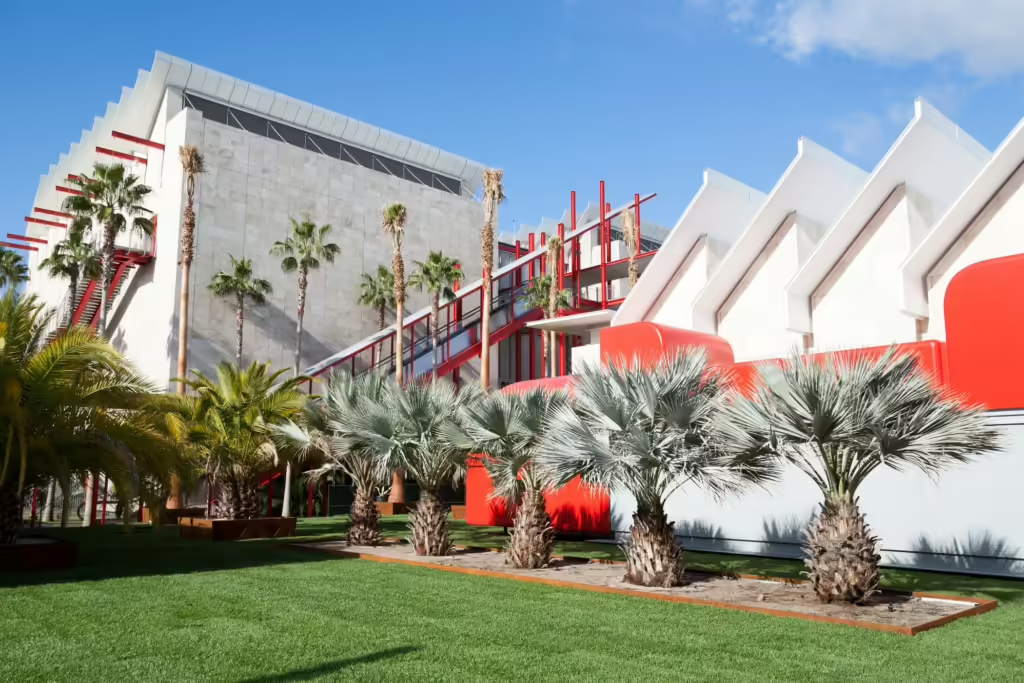The Art of Sustainability: Packaging Professor Jay Singh Joins Consortium Seeking to Reduce Carbon Footprint of Traveling Art Pieces

Jay Singh, a professor in the Packaging Area, is part of a consortium of experts tasked to create packaging that will both protect fine art while limiting the carbon footprint of art travel. (Photo courtesy of Jay Singh)
When it comes to shipping art, Jay Singh says, museums have long adhered to a strict ethos: Irreplaceable artwork must be protected at all costs.
“There is a zero-percent damage acceptance,” said Singh, a professor in the packaging program at the Orfalea College of Business. “Hence, little attention has been paid to packaging sustainability in the past.”
Recognizing the negative impact those practices have had on climate change, a consortium of experts, led by the Los Angeles County Museum of Art, is exploring how to both protect precious artwork during shipment while also reducing the carbon footprint.
“This promotes more frequent and collaborative exchanges between institutions, making it easier and more cost-effective to share collections globally,” said Singh, who will support the team as an advisor and consultant and will assist in testing.

All art, including these pieces at the Hearst Castle in San Simeon, have to be delicately packaged for shippment, either to their final destination or for traveling exhibits. But past practices have not been sustainable, leading to a new study that seeks to reduce greenhouse gas emission from art travel by fifty percent in five years. (Photo/Pat Pemberton)
The 3-year initiative, Carbon Reduction and Art in Transit (CRAIT), aims to cut greenhouse gas emissions from art travel in half by 2030. Funded by a $744,000 grant from the Institute of Museum and Library Services, the best practices CRAIT develops will ultimately lead to a guide that will be shared with museums worldwide.
“The publication will be available for free online, and printed copies will be distributed at conferences and workshops attended by museum professionals,” said Julia Latané, manager of the CRAIT project and assistant director in art preparation and installation at LACMA.
There are an estimated 104,000 museums worldwide, with roughly 35,000 in the United States, according to the United Nations Educational, Scientific and Cultural Organization. Museums have a mandate to make collections accessible to the public, which is why many institutions have active loan programs.
“A primary motivation for art in transit is the increasing demand for rotating exhibitions to diversity the narratives shared by museums, galleries, archives and libraries,” said Vincent Beltran, a scientist at the Getty Conservation Institute, and a member of the CRAIT Advisory Committee. “Objects are also loaned to support research and educational purposes.”
Art is transported via truck, plane and ship between private collectors, galleries and institutions. In the fiscal year 2023, LACMA shipped nearly 5,000 artworks for exhibitions, 500 for outgoing loans and 2,000 for new acquisitions and incoming loans.
Packaging for artwork, Latané said, varies and is determined by several factors, including the type of transit, length of transit and value of the artwork.
“Artworks can be packed in full crates, travel frames, or ‘soft pack’ containers, such as cardboard,” she said.
There are numerous risks to shipping art, she added, including extreme temperature and humidity fluctuation, shock and vibration, and risks from pollutants in the packing materials. While scientists have worked to protect artwork from those, sustainability concerns have led some museums to reconsider extensive shipping, Beltran said.
“Those concerns include the time and material used for typical 3-month exhibitions resulting in the creation and disposal of vast amounts of infrastructure – such as packing crates, display cases, temporary walls, and signage – the long-distance travel of couriers to accompany artwork, and the use of trucks containing a single artwork or limited amounts of artwork,” Beltran said.

The Los Angeles County Museum of Art, pictured here, spearheaded the CRAIT project, which ultimately will help promote greater sharing of artworks. (Photo courtesy of LACMA)
CRAIT aims to develop and disseminate practices in art packing that can phase out the fossil-fuel-based products and single-use materials that are heavily relied upon in art packing systems, Latané said.
Which is where Singh can help.
In 2018, Beltran invited Singh to present his research on the transportation environment as part of the Getty Conservation Institute Science Lecture Series.
“We had previously met in August, 2016 at Cal Poly, where we discussed how my work on packaging, material testing, and distribution aligned with both commercial interests and cultural heritage preservation,” Singh said.
When LACMA began forming its team for CRAIT, Beltran and others recommended Singh.
“We wanted to learn from an expert in the broader field of packaging and engineering and first reached out to Jay when we were designing the CRAIT program in the summer of 2023,” Latané said. “We are grateful for Jay’s generosity, experience and dedication to educating others and making our packaging systems better for the planet.”
Singh, who will incorporate discussions about the project into his Distribution Packaging Course, said the CRAIT consortium represents a unique mix of professionals.
“While I have worked with the industry on over 250 projects, seldom does the research get performed in as diverse a group of experts as on this project,” he said. “There are experts from around the world with deep knowledge of materials, tools, and techniques for making, handling, packing and moving art.”
The experts include Westpak – sponsor of the Poly Pack Symposium — which will conduct most of the testing.
While Singh’s career is focused on packaging, he also appreciates fine art – something he has been able to do a lot during his sabbatical abroad, which has included stops in Thailand, France, Japan and Spain.
“My interest in fine art is diverse,” he said, “but I have a particular love for antique statues made of wood, metal and stone – particularly of Asian Indian origin.”
Your support of Cal Poly’s Packaging program helps provide students with advanced packaging techniques that are both cost effective and sustainable.
